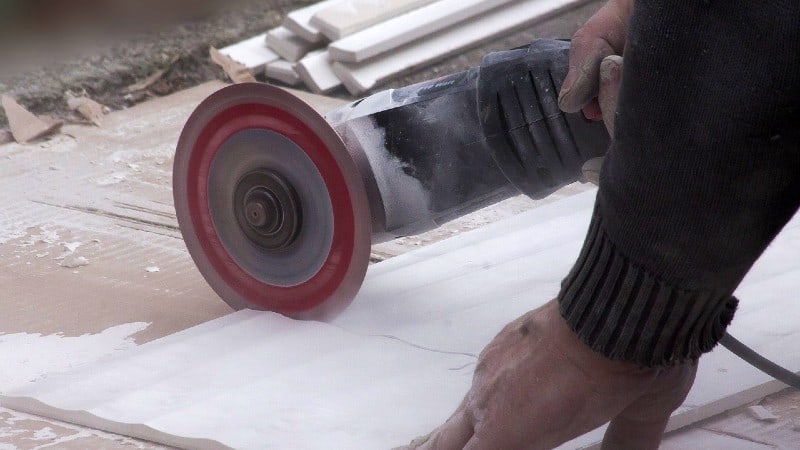Jigsaw power tools are truly amazing. You can use them to cut wood and plastic, even ceramic tiles. They’ve been used for a long time and are still a favorite among power tool enthusiasts. They come in different shapes and sizes, can have cords or be cordless, and newer models even have laser guides to help you make precise cuts. But here are five cool facts that you might not know about them…
#1. Jigsaws have a bevel adjustment option
The bevel adjustment is one of the most powerful features on your jigsaw, but many people don’t know that it’s there or how it works. The bevel adjustment allows you to change the angle of the blade relative to the soleplate of the jigsaw. The adjustment mechanism will differ slightly depending on the manufacturer and model of your jigsaw, so for specific information, always refer to the owner’s manual. In general, here’s how it works:
- Unplug the saw before making this adjustment or replacing the blade.
- Set your jigsaw blade to the desired bevel angle by loosening the Allen screw on the front of the base plate using an Allen wrench (the small metal tool that comes with your jigsaw). Note that some models may require that two screws be loosened. Most jigsaws have markings indicating commonly used angles, so it’s easy to set it accurately. But if yours doesn’t, you’ll need a protractor or similar tool.
- Adjust the base to the desired bevel angle. Here’s a tip: If you have some scrap wood that has already been cut to the correct angle, you can use it as a guide when setting the bevel.
- Once the base is at the correct angle tighten the base Allen screws. It’s easy to lose the Allen wrench, so a good tip is to attach it to the cord with tape or similar material.
- Safety first! Remember to use a dust mask/respirator, safety glasses, and hearing protection.
- Plug the saw back in and make your cut.
Just like the circular saw, table saw, and miter saw, the jigsaw can cut bevels. It doesn’t cut as cleanly as these tools do. However, it can make more complex cuts such as curves better than any of these other tools.
You can use a jigsaw for decorative bevel cuts. By angling the blade, you can create unique patterns and shapes in your workpiece that will add interest and dimension.
The term “bevel” may sound intimidating, but when it comes down to it, you’re really just dealing with an angled cut. They allow you to add a certain degree of style to your project, whether that be in the form of a clean, sharp look or something more organic and rustic.
#2. Jigsaws can be used for more than just woodworking
A jigsaw is a versatile tool that can be used for more than just woodworking. Here are just a few of the other ways you can use a jigsaw:
Cutting plastic pipes and tubes
Using a jigsaw to cut pipes and tubes is pretty easy, but you might need some practice at first. Here are the steps that you need to follow in order to use a jigsaw for cutting pipes and tubes:
- Step 1: Marking the Pipe or Tube – You need to mark the pipe or tube before you even think about cutting it. This is because you want to make sure that you cut it in the right place and the cut is straight. So before you get started, make sure that you mark the pipe or tube.
- Step 2: Clamping the Pipe or Tube – Once you have marked the pipe or tube, you are ready to start clamping it. This is a really important step. If you don’t do it, then you won’t be able to cut the material properly and there is a chance that it could slip and cause some damage.
- Step 4: Start Cutting – The next thing that needs to be done is actually cutting the pipe or tube. Start by gently pushing down on the jigsaw and slowly start cutting through the pipe. Once again, go slow and steady, as a broken blade will ruin your day. Take your time until the saw has gone all the way through. Once this has been done, then you should have a perfectly cut pipe or tube with very little effort and not much skill required.
When dealing with large-diameter plastic pipes, you can use a jigsaw; when dealing with smaller-diameter pipes made of plastic, copper, and aluminum, a pipe cutter is a better tool choice.
With the proper safety measures in place, you can use a jigsaw to cut pipes and tubes with ease. By having the right tools on hand and using the proper protection, you can handle most cutting tasks with a jigsaw. They are relatively inexpensive saws that are favored by many different craftspeople and home improvement fans, and once you learn to use them properly, they can be very easy to use.
Cutting tiles
While it is possible to cut tile with a jigsaw, this is probably not the best tool to use. If you want to cut curves into your tile, you should use a nipper to nibble away at the tile in small bits until you reach the desired shape. To cut straight lines in your tiles, you can choose from among different tools: a scoring tool, an angle grinder, or a wet saw. Wet saws have a diamond blade and use water to prevent overheating.
However, here are the steps for how to cut tile with a jigsaw if you are determined to do so:
- Step 1: Use the proper blade – A diamond grit blade will cut ceramic tile. You can find these blades online or at home improvement stores.
- Step 2: Mark the area to cut on your tile – Use a pencil, sharpie, or similar marker for this task.
- Step 3: Use water as a coolant – If you’re using an electric jigsaw, run water over your tile while cutting through it. This will help keep your jigsaw from heating up too much and prevent damage.
So now you know how to cut tiles or ceramics with a jigsaw. You can spice up your kitchen with new flooring, or use subway tiles for something more unique. Whatever you choose, remember to be as precise as possible when it comes to cutting out your pieces. And be sure to follow all safety precautions when operating power tools.

Cutting around outlet boxes or fixtures
When you’re tiling a wall, floor, or countertop you might need to cut the tile around an outlet box or other fixture. A jigsaw can do this job. It’s quick and easy to use. Here are the basic steps:
- Step 1: Mark the area to be cut
- Step 2: Drill a starter hole in the tile
- Step 3: Insert the jigsaw blade into the hole – Use a diamond grit blade
- Step 4: Use water as a coolant – You might want to use a spray bottle so that you can keep the blade and tile wet at all times.
Using a jigsaw for this purpose is still not recommended. You are using a lot of force on the saw, and if in any way it slips or you hit something that causes you to apply more force than necessary, there’s a good chance the tip of your tool will change its trajectory causing it to dig into the tile, giving you less control and ruining your lines. It might be better to use an angle grinder for this purpose.
Carving pumpkins and other Halloween decorations
The jigsaw is one of the most versatile tools in any woodworker’s toolbox. Although its uses are typically limited to woodworking projects, it can also be utilized to create unique Halloween decorations. Whether it’s a skull, a ghost, or a pumpkin, using your jigsaw will save you time and effort when carving out these spooky fall accessories.
A little ingenuity can go a long way when it comes to decorating for Halloween. If you’re having trouble coming up with unique ideas for your pumpkin carving this year, hold out for some inspiration from the previous year. You may come across an idea that you hadn’t thought of before, which could inspire new Halloween traditions for years to come.
So have fun! Be imaginative! Get your own jigsaw and carve up something for Halloween. Your kids will get a kick out of it and the neighbors will surely be impressed when they see your pumpkins carved like witches, giant spiders, or pumpkin-headed zombies.

Creating art from sheet metal, ceramics, and more!
A jigsaw offers more capabilities than many woodworkers realize. It can be used to cut all kinds of materials, not just wood. And you could use it to create sculptures and other artistic works on your own. You’re only limited by your creative vision, so let your imagination run wild with this versatile tool in hand. After all…you never know what the jigsaw might inspire!
The possibilities are really only limited by your imagination. You may find that you enjoy using the jigsaw to create abstract pieces of art, or to create functional objects that combine both utility and beauty.
You can make all kinds of interesting art with a jigsaw. It’s a perfect tool to create small figures and patterns that you can give as gifts or simply display around your home. And with some practice, you’ll be able to use it to cut out all sorts of shapes. Best of all, this is an extremely versatile and inexpensive way to get more creative in your home.
#3. A reverse tooth jigsaw blade can help you make a much smoother cut
Standard jigsaw blades cut on the upstroke, pushing the saw base down toward the workpiece.
When you use a reverse tooth jigsaw blade, instead of cutting on the upstroke, you’re cutting on the downstroke—pushing the saw upwards and away from the workpiece.
This is harder for the operator to manage, as he/she must force the saw down into the workpiece. However, the visible part of the cut is often cleaner with less splintering of the wood.
This type of blade is often used when cutting a piece of furniture or countertop, where that part of the cut would be visible. For example, if you were cutting out a hole for a kitchen faucet in your countertop, you might use a reverse tooth blade to reduce splintering.
You can also reduce splintering by using a jigsaw blade with a higher TPI.
#4. Some jigsaws have orbital action
The orbital action selector gives you control over the saw’s blade stroke by changing the pattern of movement from straight up and down (non-orbital) to an elliptical motion that moves the blade forward as it cuts (orbital). Orbital action is best for aggressive cuts in wood, while non-orbital action is best for making fine cuts or for following curves more accurately.
If you’re making a sharp curve with your jigsaw, it’s best to leave orbital action off—it’ll give you a cleaner cut. But if the curve is gradual, then you should turn orbital action on—it will make cutting easier by increasing the blade’s aggressiveness. As mentioned earlier, you can also use a higher TPI blade to get a cleaner cut.
With Orbital Action, the cut is more aggressive. This means that you’re going to get through your material faster, but it also means that you’ll need to be more careful about the speed and pressure you use. As long as Orbital Action is used responsibly, it can be a useful feature.
#5. There are two types of jigsaw blades: T-shank and U-shank
There are two types of jigsaw blades: T-shank and U-shank. Most modern jigsaws use T-shank blades, but if you have an older model, you might need a U-shank blade. When in doubt, look at the blade in your saw and buy the same type of blade.
T-shank blades are much easier to use than U-shank blades, which require an Allen wrench to secure them in place. With some models, T-shank blades can be replaced with a single lever that opens the blade clamp and allows you to remove or insert a new blade.
Often, it is possible to “pop-out” T-shank blades when you need to replace them. This is all done without the need to touch the blades. This can be useful if the blade is hot after cutting.
U-Shank blades require a tool when replacing blades. This tool can be something as simple as a flat-head screwdriver or maybe a small Allen wrench that fell out of your toolbox. But, it’s easy to lose or misplace this tool, making it an inconvenient and sometimes frustrating process.
In summary, when buying a jigsaw make sure it is the T-shank type. This will avoid any issues when trying to replace the blades. Also, if you already have a jigsaw that happens to use the less desirable U-Shank type, don’t fret. Just buy yourself an inexpensive set of Allen wrenches to replace your jigsaw blades, and keep them in a safe spot. If you’re ever stuck on a project that requires replacement blades, you’ll be able to quickly find the needed tool and finish sawing again. Another approach is to tape an Allen wrench to the jigsaw power cord.

Conclusion: 5 Things You Didn’t Know About Jigsaws
It seems that the jigsaw is just a versatile tool in general, and it is not limited to woodworking. With the many jigsaw blades available to choose from, there is a blade for every job whether you are sawing soft or hard material. For more information, see another article I wrote called: What is a Jigsaw?
Jigsaws are also good for cutting curves and holes in materials. Jigsaws have made home improvement and carpenters’ tasks easier than ever before, but they can be adaptable tools in many skills outside carpentry.
Did you enjoy this post? If so, you might want to visit my Pinterest profile. It contains pins about Woodworking, DIY & Crafts, Tools, Projects, Hardware, and other topics.


